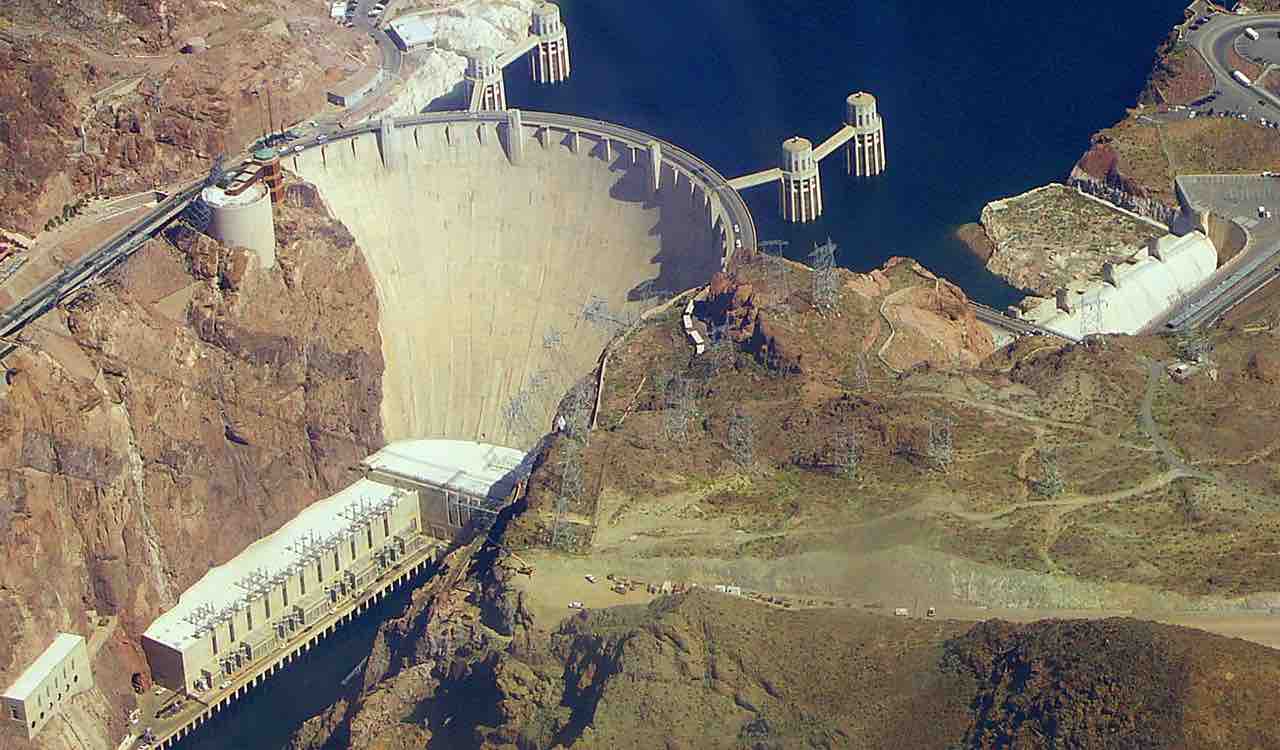The Hoover Dam is one of the great engineering marvels of America – and soon, it may be a 20th century solution for storing renewable energy.
Even as one of the sunniest states, California has struggled to utilize the vast amount of solar energy penetrating its blue skies. One of the problems is that there is no efficient way to store all the solar and wind power during times of high production, so California sends their excess energy to other states to avoid overloading their grid.
This means that—later on—when the Sun isn’t shining and the wind isn’t blowing, California turns to fossil fuels to meet demand.
This is where the Hoover Dam comes in. The Hoover Dam Proposal aims to build a wind and solar-powered pump station 20 miles south of the dam so that it can pump water from downstream back up to Lake Mead (which feeds the dam). All the water stored at the lake can then be released for power on demand, effectively turning the dam into a battery for solar and wind power.
RELATED: Tesla’s Giant Record-Breaking Battery Shows Stunning Success By Saving Consumers Millions
“[The] Hoover Dam is ideal for this,” said Kelly Sanders, assistant professor at the University of Southern California, according to The New York Times. “It’s a gigantic plant. We don’t have anything on the horizon as far as batteries of that magnitude.”
The Hoover Dam water load currently only functions at about 20% of its full capacity. With the added water from downstream, pumped reliably by wind and solar, the dam stands to be the fulcrum that Southern California turns to for green power.
Sri Narayan, who is a chemistry professor at the university, said that lithium-ion batteries simply aren’t ready to store all the wind and solar power being produced and the Hoover Dam project should be given consideration as pumped storage projects have been proven to work in the past.
MORE: Scientists Build Battery on Single Sheet of Paper Powered by Bacteria
Meanwhile, Los Angeles Mayor Garcetti added that he would like his city to be the first to run entirely on renewable energy.
“Our challenge is: How do we get to 100 percent green?” he said. “Storage helps. There’s no bigger battery in our system than Hoover Dam.”
In order to move ahead with the dam proposal, research committees are evaluating the environmental and infrastructural impacts of the project to ensure that the pump house will not disrupt the local ecosystem or communities on the Arizona-Nevada border. If approved, the Los Angeles Department of Wind and Power hopes to complete the project by 2028.
Shine Some Light On This Green Idea—Share It With Your Friends





















This would be really cool!
But the writer might want to correct: “the Sunshine State” is the nickname of Florida, not California. Calif is “the Golden State”. Also, it might be worth explaining to readers that Hoover Dam is not in California but on the border between Arizona and Nevada.
Done!